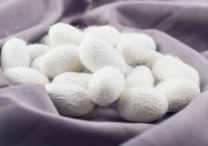
As a natural animal protein, silk fibroin has excellent biocompatibility, widely available raw materials, good mechanical properties, and biodegradable and non-toxic degradation products. Lifeasible can provide professional chemical modification services for silk fibroin, including amino, carboxyl, and hydroxyl group modifications.
The side chains of serine proteins contain amino, hydroxyl, and carboxyl groups, such as the hydroxyl group of the serine side chain, the phenolic hydroxyl group of the tyrosine side chain, and the guanidine group of the arginine side chain. The chemical modification of serine proteins changes some side chain groups by chemical reaction. In the modification process of side chain groups, other functional groups such as sulfonic acid groups, phosphate groups, epoxy groups, etc., can be introduced.
Lifeasible's researchers perform chemical modifications of filaments in a variety of ways. Among them, the acylation modification for the amino group can enrich the carboxyl group of the side chain of silk fibroin, thus improving the dyeability of silk fiber, etc.; the sulfation modification for the hydroxyl group is beneficial to improve the anticoagulant property of silk fibroin material; the amidation modification for carboxyl group can regulate the absorption-release property of silk fibroin for ions. The following are the different modification services.
A series of acylation reactions are performed with the amino and imino groups of silk fibroin using acylating agents. The acylation reagents are mainly acid anhydride and chloride, including monoacid liver and diacid anhydride. The principle of acylation is that the nucleophilic group (amino group) of the protein molecule and the electron-philic group of the acid anhydride react under alkaline conditions.
Modification of carboxyl groups is mainly amidation modification, where the side chain carboxyl groups of silk fibroin can be reacted with carbodiimide. The first step of the reaction is to generate an acylurea intermediate, which is transferred and rearranged to form a urea derivative; the second step is that the amino group in the silk fibroin, in turn replaces this urea derivative to form a crosslink.
Sulfonation or sulfation reactions are reactions that introduce sulfonic acid groups into organic compounds. The sulfation reaction is a reaction in which sulfur atoms are attached to oxygen atoms to form O-S bonds, and the product obtained is an alkyl sulfate. The sulfation of serine is mainly the reaction of oxygen atoms of the hydroxyl groups of serine and tyrosine in serine protein with sulfur atoms to achieve modification of hydroxyl groups.
Modification of phenolic groups can be used to attach small functional groups to the serine to produce hydrophilic serine derivatives. Such reactions affect the secondary structure of the filament protein, hinder the formation of β-folded structures, and accelerate the formation of hydrogels.
If you are interested in our services, or if you want a service that is not listed above, please feel free to contact us and our staff will customize a professional product solution for you.